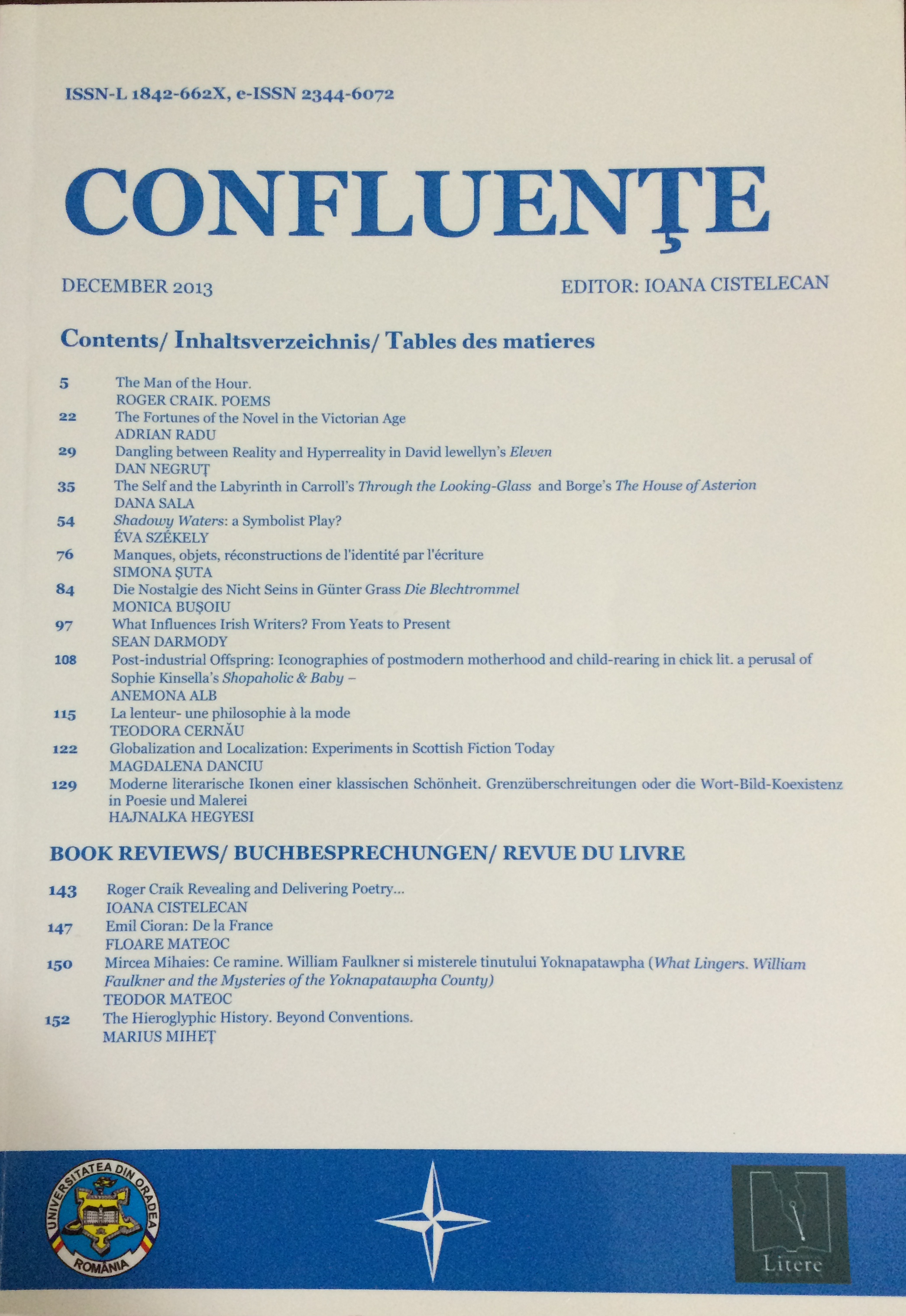The Self and the Labyrinth in Lewis Carroll’s »Through the Looking-Glass« and Jorge Luis Borges’ »The House of Asterion«
The Self and the Labyrinth in Lewis Carroll’s »Through the Looking-Glass« and Jorge Luis Borges’ »The House of Asterion«
Author(s): Dana SalaSubject(s): Studies of Literature
Published by: Editura Universitatii din Oradea
Keywords: Labyrinth; Minotaur; dream; intertextuality; symmetry; mirrors; the role of spatial structures; Lewis Carroll; Jorge Luis Borges;
Summary/Abstract: The chosen literary works contrasted here are »Through the Looking-Glass« and »What Alice Found There« by Lewis Carroll and »The House of Asterion« (La casa de Asterión in original), by Jorge Luis Borges. The relationship explored in this article is that between enclosure and openness in labyrinthine spaces, such as the Looking-glass House, for Alice, irrespectively his house where “any particular place is another place”, for Asterion. We, the readers, can be inside the labyrinth revealed by text only through the interiorities experiencing it. The spatial structures of labyrinth allow the retrieval not just of the symmetrical double of the mirror but also the opening of the self, the Open in Heideggerian terms, which is present at a deeper level. Labyrinth is also the secret writing, the El Aleph, and it is intertextuality that can play the role of initiation from one level to another. Dream is the link between all levels and between the self and the labyrinth. By analyzing the main characters, Alice and Asterion, and their relationship with the labyrinthine space, it appears that it is the self who shapes the maze rather than the other way round.
Journal: Confluenţe. Texts and Contexts Reloaded
- Issue Year: 2013
- Issue No: 1
- Page Range: 35-55
- Page Count: 21
- Language: English

